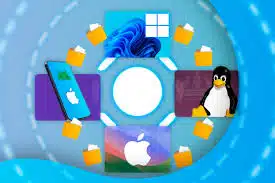- Understanding the Shift to Linux
- Why Consider Linux?
- Preparing for Migration
- Assess Compatibility
- Choose a Distribution
- Setting Up Linux
- Getting Support
- Embracing the Learning Curve
- Conclusion
Understanding the Shift to Linux
The landscape of operating systems is ever-evolving, and more users are contemplating a shift from established platforms like Windows and macOS to Linux. This transition often brings with it a wealth of questions and concerns. Understanding the motivations behind this migration, as well as the practical steps involved, is essential for those considering this change.
Why Consider Linux?
There are several compelling reasons why individuals and organizations are migrating to Linux.
-
Cost-Effectiveness: Linux is free to use, which is particularly attractive for students, small businesses, and startups. The absence of licensing fees can lead to significant savings over time.
-
Stability and Performance: Many users report that Linux offers superior performance and stability compared to its counterparts. Its lightweight nature means it can run smoothly on older hardware, which is a considerable advantage for those with aging machines.
-
Security: With a reputation for being more secure, Linux is less susceptible to viruses and malware. This inherent security feature makes it an appealing choice for professionals concerned about data protection.
-
Open Source Community: Being open source allows users to modify and share their software freely. This fosters a community-driven environment where users can contribute improvements and troubleshoot issues collaboratively.
Preparing for Migration
Transitioning from Windows or macOS to Linux requires thoughtful preparation. Here are key aspects to consider:
Assess Compatibility
Before making the leap, it’s crucial to check if the applications and hardware you rely on are compatible with Linux. While many popular applications have Linux counterparts, some proprietary software may not run natively. Researching alternatives or using software like Wine, which allows Windows applications to run on Linux, can be helpful.
Choose a Distribution
Linux comes in various distributions (or “distros”), each tailored to different needs. Popular choices include:
- Ubuntu: Known for its user-friendly interface, it’s ideal for those new to Linux.
- Fedora: This is excellent for those who want the latest features and cutting-edge software.
- Debian: A stable choice respected for its reliability and performance.
Selecting the right distro can significantly enhance your user experience and make the transition smoother.
Setting Up Linux
Once you’ve chosen a distribution, follow these steps to get started:
-
Installation: Many Linux distributions offer guided installation processes. You can opt for a dual-boot setup to keep your existing OS while exploring Linux.
-
User Interface Customization: Familiarizing yourself with the Linux desktop environment (e.g., GNOME, KDE) allows for customization to match your workflow preferences.
-
File Management: Understanding the file system hierarchy in Linux is vital. The structure differs from Windows or macOS, so taking the time to learn about directories (like
/home,/etc, and/usr) will facilitate smoother navigation.
Getting Support
As you adapt to your new Linux environment, don’t underestimate the value of community support. Online forums, tutorial websites, and social media groups are abundant and can provide guidance on common issues, tips, and best practices. Engaging with the community not only aids your transition but also introduces you to like-minded individuals passionate about open source.
Embracing the Learning Curve
Transitioning to Linux is not without its challenges. There is a learning curve as users acclimate to different command lines, system management tools, and software installations. However, this transition is also a fantastic opportunity to gain new skills. Many users find the experience to be rewarding, leading to a deeper understanding of how operating systems function.
Conclusion
Migrating from Windows or macOS to Linux is an exciting journey filled with opportunities for growth and customization. By understanding the reasons behind the migration, preparing adequately, and reaching out for support, you can secure a successful transition to this versatile operating system. As you embark on this adventure, remember that the Linux community is there to support you every step of the way.
